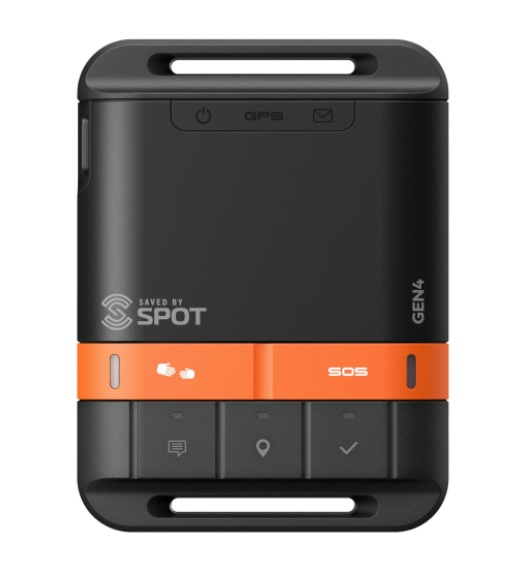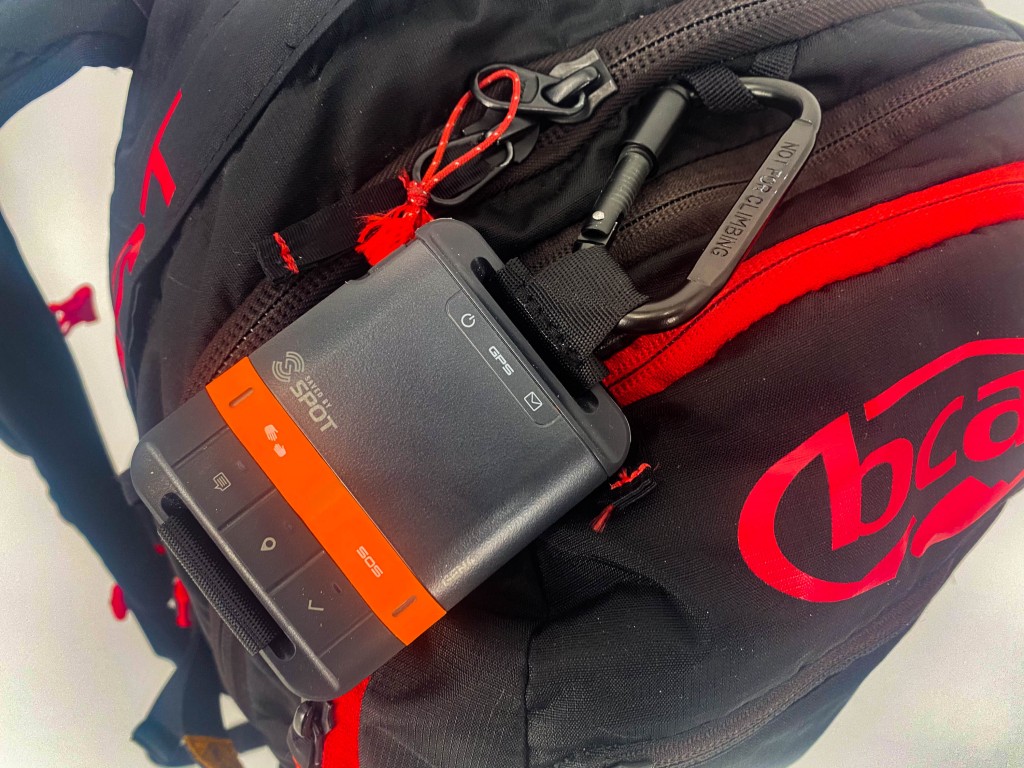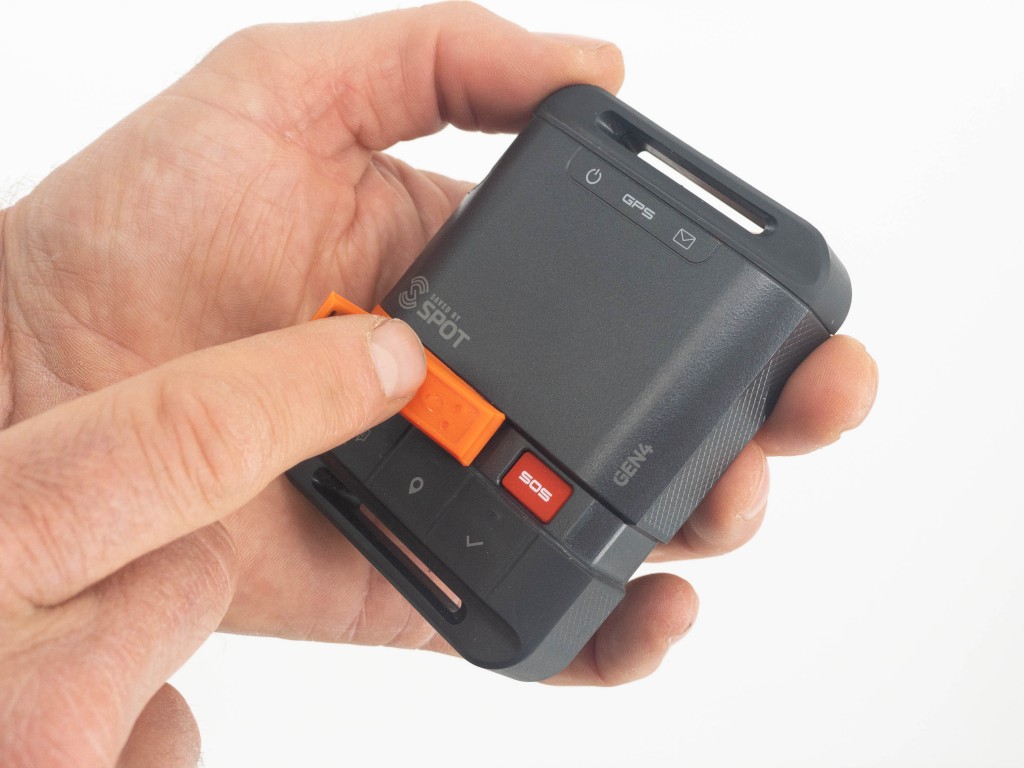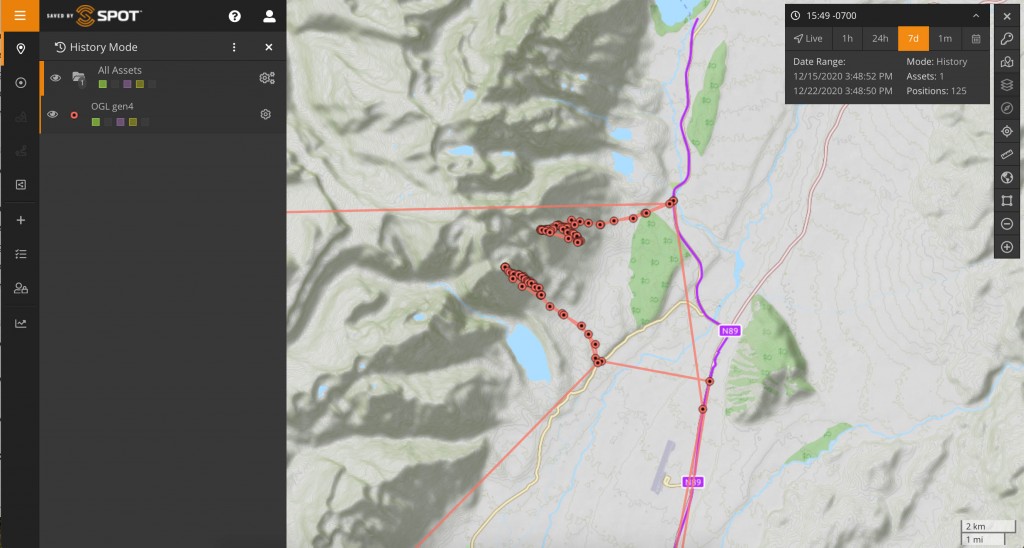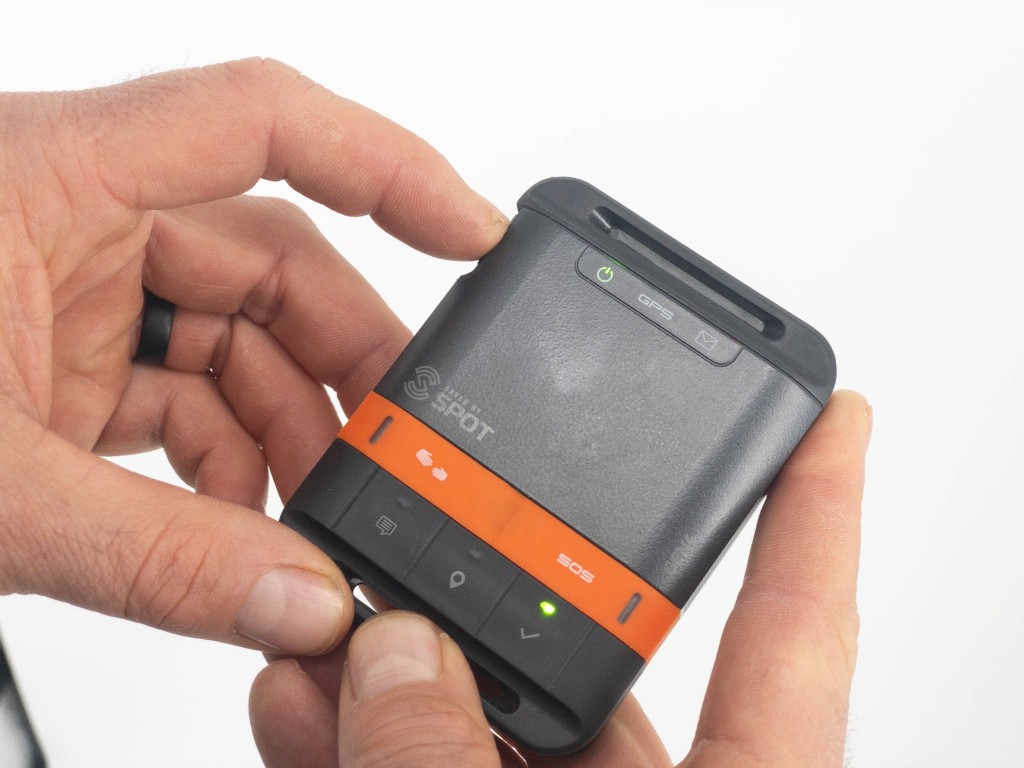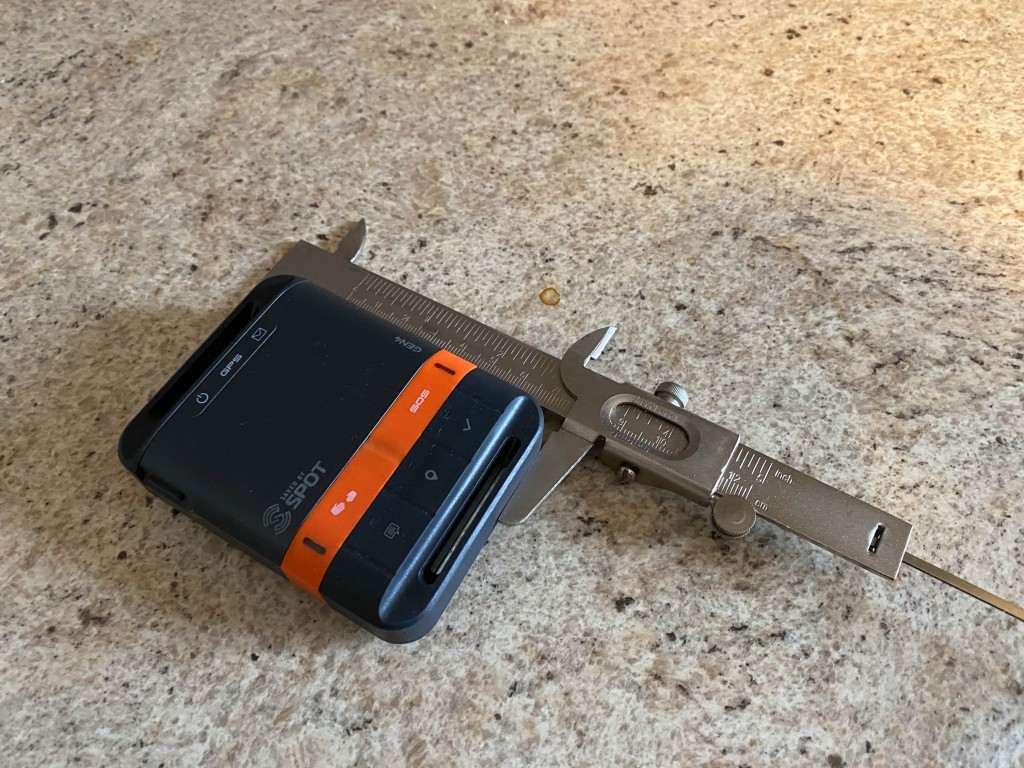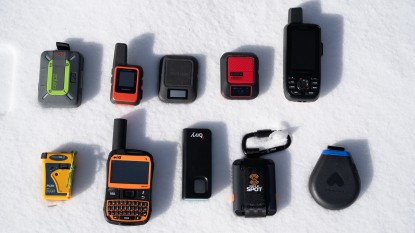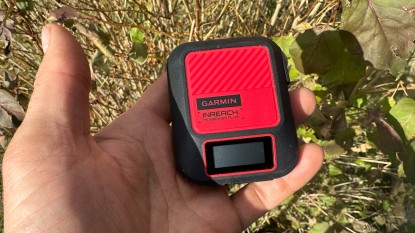SPOT Gen4 Review
Our Verdict
Compare to Similar Products
 This Product
SPOT Gen4 | |||||
|---|---|---|---|---|---|
| Awards | Occasional Activation Bang for the Buck | Great Value for SOS Only | |||
| Price | $99.95 at Amazon Compare at 3 sellers | $199.95 at REI Compare at 2 sellers | $199.00 at Amazon Compare at 2 sellers | $39.99 at Amazon Compare at 2 sellers | $369.95 at REI Compare at 2 sellers |
Overall Score  |
|||||
| Star Rating | |||||
| Bottom Line | An inexpensive, proven one-way communicator for wilderness peace of mind and for tracking extended "FKT" style efforts | A compact, full service satellite messenger that has all you need, and is close to all you would want | This is a smooth, comprehensive two-way communicator that relies on a proven satellite network and brings innovations that raise the bar | This is a tiny device from a new player in this market, using an inexpensive satellite network with great potential. The catch is that we don't know much about this satellite network, and the SOS button on the device is fully exposed to potential inadvertent triggering | A small, satellite-linked emergency communicator that is exactly what you need and nothing more |
| Rating Categories | SPOT Gen4 | ACR Bivy Stick | ZOLEO Satellite Com... | Motorola Defy Satel... | Ocean Signal rescue... |
| SOS/Emergency Messaging (30%) | |||||
| Non-Emergency Messaging (25%) | |||||
| Signal Coverage (20%) | |||||
| Ease of Use (15%) | |||||
| Portability (10%) | |||||
| Specs | SPOT Gen4 | ACR Bivy Stick | ZOLEO Satellite Com... | Motorola Defy Satel... | Ocean Signal rescue... |
| 2-way Messaging? | No | Yes | Yes | Yes | No |
| 2-way Messaging Available via Cellular/Wifi? | No | No | Yes | Yes | No |
| Custom Messaging Viewable and Composable on Device? | No | No | No | No | No |
| Passive Tracking (turn on and forget about it - viewers at home can watch your progress on the web) | Yes | Yes | No | Yes | No |
| Weight w/ Batteries | 4.9 oz | 3.6 oz | 5.3 oz | 2.4 oz | 4.0 oz |
| Battery Life | Up to 168 hours of tracking | Up to 120 hours | 200+ hours when checking messages every 12 minutes | Up to 96 hours | 24 hours |
| Waterproof Rating | IP68 (protection from harmful dust. Rain, splashing, and accidental submersion at least 30 minutes) | IP67 (protection from harmful dust. Rain, splashing, and accidental submersion up to 30 minutes) | IP68 (protection from harmful dust. Rain, splashing, and accidental submersion at least 30 minutes) | IP68 (protection from harmful dust. Rain, splashing, and accidental submersion at least 30 minutes) | No Formal Rating. Likely exceeds rating system. Claimed "Up to 15 meters" |
| Pairs with Smartphone? | No | Yes | Yes | Yes | No |
| Requires recipient to use a special app for two-way communications? | No | Yes | Yes | Yes | N/A |
| On Device Functions (if you lose or disable your smartphone) | All. | SOS, check-in, tracking. All texting requires smartphone. | SOS, check-in. All texting requires smartphone | SOS, check-in. All texting requires smartphone. | All. |
| Satellite Network | Globalstar | Iridium | Iridium | Skylo | COSPAS/SARSAT |
| Dispatch service | Focus Point International | Global Rescue | GEOS | Focus Point International | COSPAS/SARSAT |
| Dimensions | 3.5" x 2.7" x 0.9" | 1.9" x .9" x 4.5" | 3.5" x 2.6" x 1.0" | 3.3" x 2.4" x 0.4" | 3.0" x 2.0" x 1.3" |
| Volume | 8.5 CU IN | 7.7 CU IN | 9.1 CU IN | 3.2 CU IN | 6.8 CU IN |
Our Analysis and Test Results
SPOT's fourth iteration of their flagship device is effective and familiar. It has a simple set of features and functions and is basically unchanged from the third generation. The minor changes can be categorized in both positive and negative ways. The net result is a product that works great at what it does but doesn't greatly improve on what is available. Further, other products from other companies do even better in many ways. If you need incredibly long battery life for extended, single-push efforts on which you want or need to have automated tracking synced to web-ready maps, the SPOT Gen4 is for you. If you want more all-around wilderness communication options, look elsewhere.
What, exactly, are the changes between Gen3 and Gen4? Mostly, these two devices are the same, but the important differences are as follows:
The Gen4:- Is an ounce heavier than the Gen3
- Is more water and dust resistant
- Taps into a more robust mapping program for the at-home viewer
- Runs on only AAA batteries while Gen3 runs on AAA batteries or USB power
- Has more sophisticated tracking activation; it will turn off while you sit still and then turn on when you move
- Can be programmed to activate tracking when you arrive at or depart from a specific location
Performance Comparison
SOS/Emergency Messaging
The Gen4 has a clear and easy-to-use SOS button. Activating this feature sends your location and an alert, via satellite relay, to Focus Point International Inc. (SPOT LLC contracts with FPI for emergency dispatch. No other US private sector satellite messengers use FPI dispatch. Focus Point International is new to us; we first learned of this company when SPOT changed their dispatch service from a different outfit in 2021). At FPI, presumably like at the other outfits, a team of Search and Rescue dispatch experts works to secure the help of resources local to your position. This service is crucial, and this is what the SPOT device offers. It requires a subscription, and responsible backcountry travel demands that you understand the realities of local, on-the-ground emergency response.
Your message will get out rather quickly, often in a matter of minutes. However, wilderness SAR response rarely occurs within an hour, and — depending on weather, terrain, socio-political issues, economic factors, and cultural limitations — it could be days, if not weeks, away. Activating the SOS mode on a SPOT device in Grand Teton National Park (where, incidentally, our lead test editor interviewed SAR experts on the function of various emergency location and notification products) will result in a very different response time than in high-altitude South America, for instance. Your SPOT device and service is good at getting word out, but it can't circumvent the realities of remote emergency response.
In addition to the SOS function that sends a message to professional dispatch, the Gen4 also features a Spot Assist button that notifies your contacts that you are in a non-life-threatening situation but need help. You and your contacts should agree, before you head to the wild, the parameters around your use of the Spot Assist mode. You can also subscribe to a version of the SPOT Assist program that will send your message to land or marine-based assistance services. This would, in practice, be used in an out of automobile gas in the desert situation instead of an arm crushed under a rock in the desert situation.
Even with the “SPOT Assist” mode as an option, this device's emergency messaging is rudimentary. Those responding to an SOS message must assume the worst. With an SOS activation, SPOT's contracted dispatch service has no way of telling if the emergency is trauma that will be fatal in minutes or “we'll run out of food in four days if this storm doesn't let up.” Two-way messengers are the only way to communicate that degree of nuance.
Non-Emergency Messaging
The Gen4 offers rudimentary non-emergency messaging. As mentioned above, there are two degrees of emergency messaging. The next two modes of messaging are the “OK” message and the custom message. You can preprogram the text of each of these messages, and you can determine where that message is sent, as long as you have an internet connection. You can set it up to send via SMS, email, and to certain types of social media. This also needs to be programmed while still in civilization. Once in the field, you simply press the “OK” or custom message button, and it transmits whatever message and delivery options you programmed.
Over more than a decade of testing now, we have found that about 80% of these OK messages made it to their recipients. Because of this attrition rate, repetition is important, and your loved ones should thoroughly understand the device's function. As with any of these satellite communicators, agreeing with your contacts at home that “no news is good news” is the best idea.
Finally, the fifth type of messaging available from a SPOT Gen4 device is its tracking mode. This is something that can be programmed and activated and then allowed to passively send your position on some pre-set interval to SPOT's public or private web interface. Your contacts can be apprised of this tracking in a variety of ways. For some, this is an important attribute. Our test team finds it interesting in select circumstances, but it is largely a non-factor in our routine use. This device has no ability to receive any sort of messaging.
Signal Coverage
First, note that, just like all satellite communications, the SPOT device's “view” of the sky is critical. Local vegetation, terrain, and electronic interference can impede the transmission of SPOT messages. This is the same for all satellite communications. In a specific place and time, since the respective satellite communication networks use satellites located differently and moving at different rates, one device and network might work slightly better than another.
The SPOT device you might purchase and then carry is only one component of a much larger system. When you send a message from your SPOT, whether that message is of the SOS variety or not, it goes to the outside world via the “Globalstar” satellite network. Contrary to its branding, the Globalstar satellite constellation is not entirely global. Consult SPOT and GlobalStar's documentation to see where coverage exists and to see if it might matter for you. For many adventurers, Globalstar covers all you might need.
Ease of Use
When you receive your Gen4, the instructions make it clear that you will need to buy a subscription for it to work. The setup process is relatively painless. Create an account, pay, and activate — you have several service options. An important step, which should be an ongoing dialog, is to inform your contacts in civilization how to respond to the various types, timing, and potential lack of messages from your SPOT. Again, we recommend a “no news is good news” approach.
Once configured, paid, and activated, your SPOT is easy to use. Depending on the agreements you have with your contacts, you might leave the SPOT in your pack for days, weeks, or years with no use at all. If you wish to use it for non-emergency messaging, there is some set up you must do at home. If you want to use the tracking function, there is even more configuration you must do. With tracking especially, mind your battery life.
Battery life of the Gen4, especially with brand new lithium AAA batteries, is incredible. We tested it for weeks of nearly-daily adventures, tracking the entire time. It goes so long that you might forget to monitor the battery life in this sort of use. This was the same with Gen3. You could track constantly for days and days on one set of batteries. With the Gen3, though, you could also use the device on USB-cable power. You can't do this with the Gen4. More and more electronics, whether for the wilderness or for civilization, are using USB-recharged internal batteries. Presumably, SPOT sticks with replaceable AAA batteries for ease of field replacement. If you carry multiple devices that use AAA batteries, this is a nice attribute. However, it is now entirely possible to fully equip your wilderness electronic kit with USB-rechargeable batteries. Many of our testers fall exactly into this category. On even the biggest of some expeditions now, our lead tester doesn't need disposable batteries. Headlamp, phone, GPS/altimeter watch, tablet/e-reader, UV water treatment, and non SPOT satellite communication devices all run on internal, rechargeable, USB-ready batteries. To carry a SPOT Gen4, one could need an entirely different battery system. It's anathema to some, but AAA batteries are now the outlier in terms of ubiquity in the wild.
Portability
For what it does, the SPOT is fairly small. For many years now, people have carried the SPOT on adventures of all kinds. It could get a little smaller and lighter, but it is hard to imagine a device like this cutting a major percentage off. We don't like that it got an ounce heavier with the Gen4 upgrade, but it still isn't huge or heavy. We do like that Gen4 is more water and dust resistant than its predecessor.
Should You Buy the SPOT Gen4?
Pick this as the least expensive messenger with any sort of non-emergency messaging. You cannot receive messages, but you can send basic, pre-arranged messages to the outside world. In addition, of course, to emergency SOS. If this is enough and you are on a budget, this is a great option.
What Other Personal Locator Beacons Should You Consider?
There isn't any other option on the market that is exactly the same as the SPOT Gen4. You can spend just a little more and get two-way messaging with something like the Garmin inReach Messenger (or either of the other two Garmin options we've reviewed, the inReach Mini 2 or GPSMAP 66i) or the ACR Bivy Stick. The Emergency SOS feature on the iPhone Satellite Messaging does almost everything that the SPOT Gen4 does. COSPAS/SARSAT devices like the Ocean Signal PLB1 are much, much cheaper but have no non-emergency messaging function.


